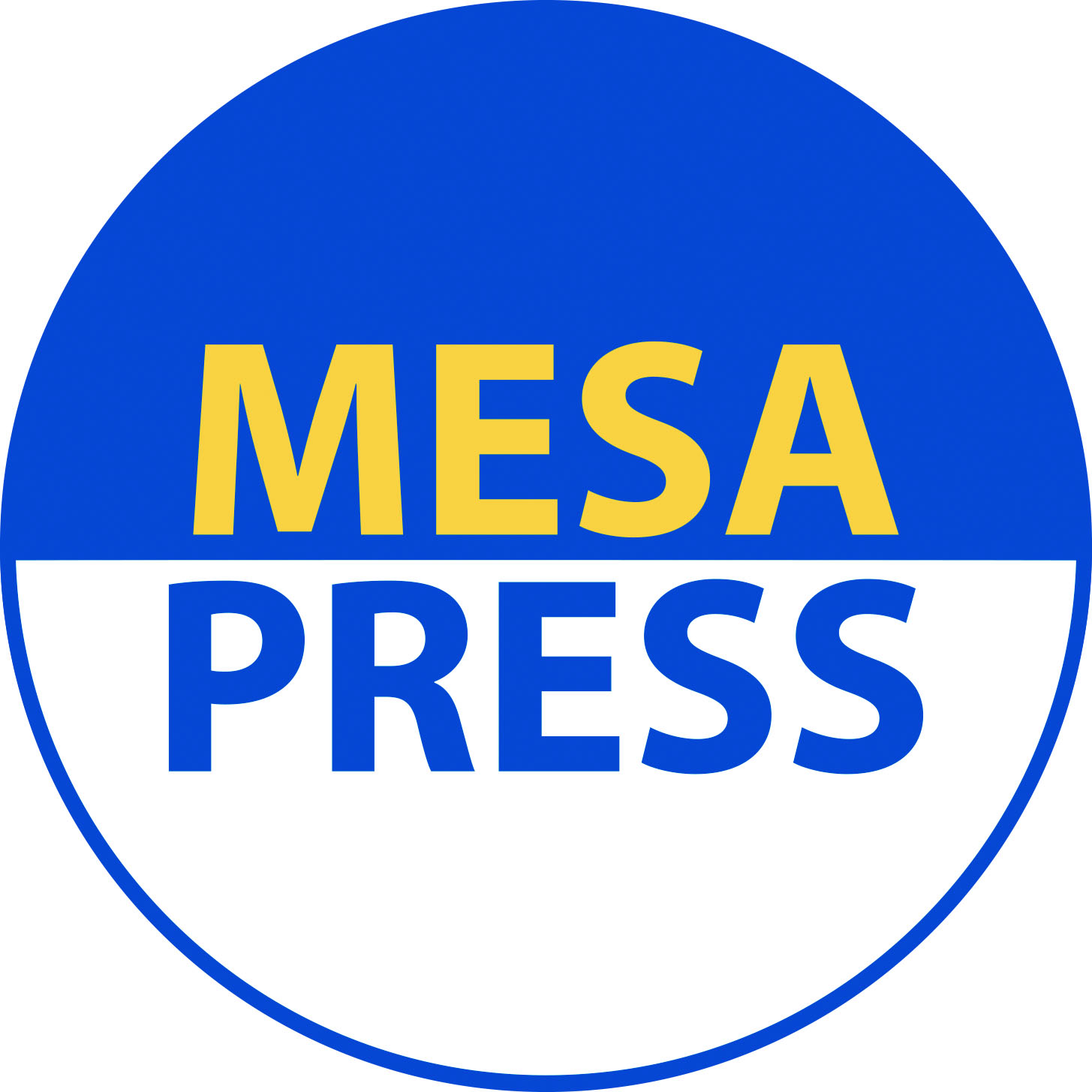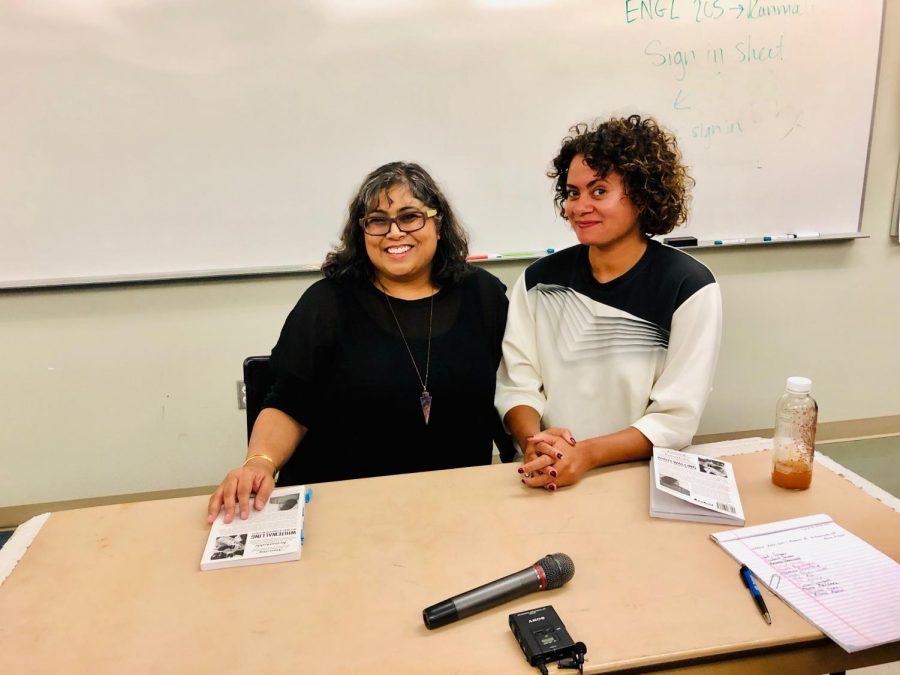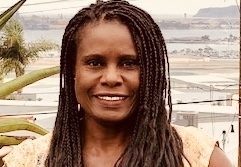Art in America – involving race, censorship and free speech – often offensive towards members of the black community, should not be used by artists, curators or museums to generate profit: Was the topic of a conversation with writer and art critic Aruna D’Sousa and filmmaker and UCSD Professor, Nicole Miller, at San Diego Mesa College on Oct. 8.
Speaking to an audience of approximately 200, mostly students and some faculty, D’Sousa and Miller conducted an engaging discussion, giving recent and historical examples of art in America which has angered many, resulting in protest in galleries and on social media, as well as raising issues of free speech and censorship.
D’Sousa, author of the book “Whitewalling: Art, Race & Protest in 3 Acts,” said the subject of who is allowed to address issues of race in America, resulted in massive protest from the community, when a rich white artist, Dana Shutz, created “Open Casket,” a contemporary painting of Emmitt Till’s mutilated body in a casket, for the 2017 Whitney Biennial.
Protesters, D’Sousa said, were asking, “is it appropriate for a white artist to take up this particular subject matter?” They were also saying, D’Sousa continued, “these issues, which has almost never been taken up by black artist, because these images are so resonate, and sacred.”
The protest of “Open Casket,” ironically, said D’Sousa, also brought about an incredible backlash of people complaining that the work of Shutz was being censured, “how dare they try to censure Dana Shutz?” was the response, said D’Sousa,
D’Sousa said she was not upset with Shutz, because Shutz said she created the painting to show solidarity with a mother whose son was murdered.
Miller, winner of a John Gughenheim Foundation Award, chimed in, “I saw it as an obvious act of Shutz trying to make beautiful, something that was horrendous,” she said.
“For me, it was just technically a bad artwork,” Miller continued.
Audience member Kimi Morino, 26, Art major at Mesa, expressed her appreciation for the discussion. “As an artist, it made me think about how i will present my art,” she said.
A 1979 art exhibition by a young white artist, presented another offensive expression towards blacks, said D’Sousa, “he used the most incendiary, racist term in the English language, to title his show.”
D’Sousa said when people asked the art gallery why he used that term, they were told by the staff that he was making his charcoal drawing and at the end of the day, his arms were covered with black charcoal, which was how he derived the term to name his drawing.
D’Sousa explained further, that this painting was likewise defended by many respectable people in the art community, many who had taught and influenced her.
Miller, who has had solo exhibits at: Ballroom Marfa, Centre D’art Contemporain Geneva and California African American Museum in Los Angeles chimed in, “it was heart-breaking,” she said.
Miller continued, “These were people who became central to art criticism in our history and in New York, they were on the wrong side of this issue.”
A third art event covered in D’Sousa’s work was the exhibit “Harlem on my mind”, at the Metropolitan Museum of Art in New York.
This exhibit, D’Sousa explained, was aimed at demonstrating that The Met “was welcoming to all audiences, not just a place for white people.”
“(The Met) hired black staff and (consulted) with an advisory committee of Harlem residents.” Said D’Sous. Yet, “it didn’t include a single work, painting or sculpture, by African American artist in the show.” As a result, D’Sousa continued, Harlem on my mind created one of the biggest protest in US history.
“Those protest of relatively small groups of people, were bad-ass, and managed to leverage their voices in ways that required the museum to disburse part of its collection…that’s why you have the Bronx Museum of Art and Queens Museum of Art,” she said.


